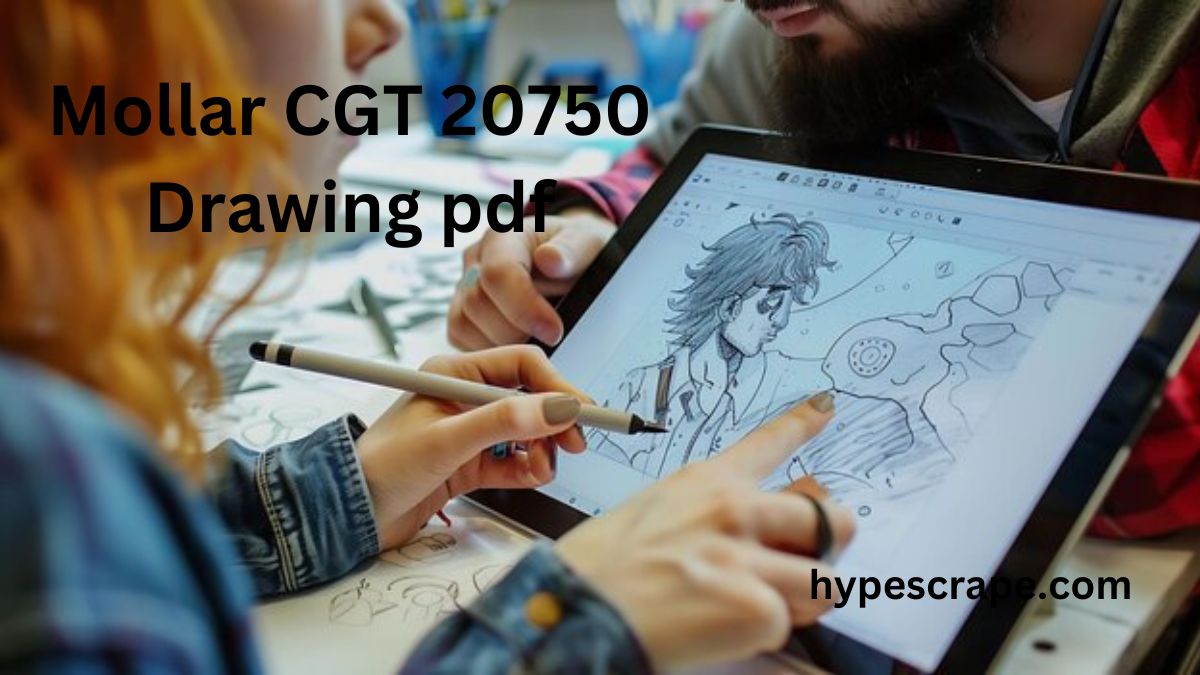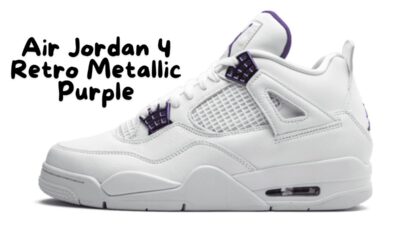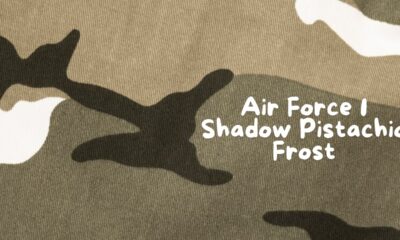TECHNOLOGY
Mastering Technical Artistry with the Mollar CGT 20750 Drawing pdf

In the world of technical drawing, precision, clarity, and efficiency are paramount. For those who find themselves navigating this intricate craft, the Mollar CGT 20750 Drawing pdf tool emerges as an indispensable companion. Whether you’re a seasoned draftsman or a student venturing into the realm of technical drawing, understanding how to leverage the power of the Mollar CGT 20750 can elevate your work to new heights. This post aims to guide you through everything you need about this tool, its applications, and how to maximize its potential in your projects.
Why Mollar CGT 20750 is Gaining Popularity
The Mollar CGT 20750 Drawing pdf tool has quickly become a favorite among professionals and hobbyists. Its growing popularity is no accident. Known for its precision and user-friendly features, this tool meets the demands of varied drawing tasks. It’s crafted with high-quality materials ensuring durability, a feature that resonates with users who rely on consistency and reliability in their work. Furthermore, its ergonomic design reduces strain during prolonged use, making it ideal for long projects.
For students and professionals alike, the Mollar CGT 20750 offers an excellent blend of traditional drawing aesthetics combined with modern functionality. This makes it not just a tool but an extension of the artist’s hand, enabling fluid and precise rendering of ideas onto paper. The ease of use and adaptability also means that even beginners can quickly get up to speed, allowing them to focus on honing their skills.
Exploring the Mollar CGT 20750 Features
One of the standout aspects of the Mollar CGT 20750 Drawing pdf tool is its array of features that cater to various technical drawing needs. From crafting detailed schematics to complex architectural designs, this tool is engineered to handle it all. Its precision tip ensures fine lines and intricate details are easily captured, a critical aspect for technical disciplines where accuracy is paramount.
Additionally, the Mollar CGT 20750 comes equipped with adjustable settings, allowing users to modify the pressure and angle of the nib to suit their personal drawing style. This flexibility is crucial for artists who require varying line weights and textures in their work. The ease of customization ensures that users can maintain consistency across different projects, streamlining the creative process.
Another key feature is the tool’s compatibility with various materials. Whether you’re working on traditional paper, tracing film, or other specialized media, the Mollar CGT 20750 adapts seamlessly, providing the same level of performance across mediums. This versatility is a boon for those who frequently switch between different phases of a project, ensuring uninterrupted workflow.
How to Get Started with Your Mollar CGT 20750
For those new to technical drawing or the Mollar CGT 20750, getting started is simple. First, familiarize yourself with the tool’s components and settings. Spend some time exploring the adjustable features, like the nib pressure settings and angle adjustments. This hands-on exploration will help you understand how each setting affects your drawing, enabling you to customize it to your preferences.
Next, practice basic drawing exercises to build comfort with the tool. Start with simple lines and shapes, gradually progressing to more complex forms. This step will not only help in mastering control over the Mollar CGT 20750 but also develop a foundational understanding of technical drawing principles. Remember, consistency in practice leads to improvement.
Finally, engage with online resources and communities focused on technical drawing. Many forums and tutorial sites offer tips specifically for using the Mollar CGT 20750, providing valuable insights from experienced users. Participating in these communities can accelerate your learning and expose you to a wider array of techniques to incorporate into your projects.
Perfecting Line Work with the Mollar CGT 20750
Line work is a fundamental aspect of technical drawing, and mastering it is crucial for success. The Mollar CGT 20750 is designed to aid in perfecting line work, thanks to its precision tip and customizable settings. To start, focus on the basics of line weight and consistency. Understanding these elements will significantly enhance the clarity and impact of your drawings.
When using the Mollar CGT 20750, experiment with different pressure levels to create varied line weights. This ability to modify line density is particularly useful in highlighting specific areas of a design, guiding the viewer’s eye across the drawing. Over time, this practice will enable you to intuitively control line variations, adding depth and dimension to your work.
Regular practice with the tool will help refine your ability to maintain steady, even lines. Incorporate exercises that require both fast, flowing lines and slow, deliberate strokes. This variety will build dexterity and control, essential skills in technical drawing. By dedicating time to mastering line work, you’ll lay a solid foundation for more complex drawing techniques.
Achieving Precision in Technical Drawings
Precision is at the heart of technical drawing, and the Mollar CGT 20750 is engineered to support this necessity. When working on detailed schematics or architectural plans, every line and curve must be accurate. Begin by setting up your workspace to promote precision. Ensure that your drafting surface is stable and well-lit, minimizing distractions and errors.
Utilize the tool’s adjustable settings to achieve the desired level of precision. The Mollar CGT 20750 allows for fine-tuning of the nib’s pressure and angle, enabling you to achieve crisp, clean lines consistently. Take the time to adjust these settings according to the specific requirements of each project, ensuring that your drawings reflect the meticulous attention to detail required in technical work.
Incorporate measuring tools alongside your Mollar CGT 20750 to enhance accuracy. Rulers, protractor, and compasses are invaluable in maintaining scale and proportion. By combining these traditional instruments with the advanced capabilities of the Mollar CGT 20750, you can ensure that your technical drawings are both precise and professional.
Streamlining Workflow with the Mollar CGT 20750
Efficiency is key in technical drawing, and the Mollar CGT 20750 is designed to streamline your workflow. Start by organizing your tools and materials before beginning a project. A clutter-free workspace minimizes time spent searching for supplies, allowing you to focus on the task at hand. Consider setting up a dedicated area for your Mollar CGT 20750 and related accessories.
Use the tool’s features to expedite common drawing tasks. For instance, the adjustable nib settings can be preset for different stages of a project, reducing the need for constant recalibration. This approach not only saves time but also maintains consistency across your work, enhancing the overall quality of your drawings.
Additionally, take advantage of digital resources to complement your use of the Mollar CGT 20750. Many software programs offer templates and tools that align with technical drawing standards, allowing you to create digital drafts that can be refined with your physical drawings. This integration of digital and traditional methods can significantly enhance productivity and accuracy.
Integrating Technology with Traditional Techniques
The fusion of technology and traditional drawing methods opens new avenues for creativity and precision. The Mollar CGT 20750 serves as a bridge between these worlds, offering features that complement both digital and manual processes. Explore how technology can enhance your technical drawings by incorporating software tools alongside your Mollar CGT 20750.
Begin by digitizing your sketches using scanning or photographing techniques. This digital copy serves as a backup and can be used for further refinement in graphic design software. Many programs offer features such as layering, color correction, and scaling, which can enhance the detail and presentation of your technical drawings.
Consider using tablets or styluses as part of your drawing process. These devices allow for the creation of digital drafts that can be printed and further refined with the Mollar CGT 20750. By integrating these technologies, you can take advantage of their precision and flexibility, resulting in comprehensive and polished final products.
Maintaining Your Mollar CGT 20750
Proper maintenance of your Mollar CGT 20750 ensures its longevity and performance. Regularly clean the nib and housing to prevent clogging or wear. Use a soft cloth or brush to gently remove debris, avoiding harsh chemicals that could damage the tool.
Store the Mollar CGT 20750 in a protective case when not in use, shielding it from dust and potential damage. Consider dedicating a specific area of your workspace to store the tool and its accessories, ensuring easy access while maintaining its condition.
Periodically check the tool’s components for signs of wear or damage. Address any issues promptly, whether through repair or replacement, to maintain optimal performance. By investing time in the care of your Mollar CGT 20750, you’ll ensure its reliability and effectiveness in your technical drawing endeavors.
The Community Behind Technical Drawing
Engaging with the technical drawing community can provide invaluable support and inspiration. Seek out forums and social media groups that focus on technical drawing techniques and tools. These platforms are excellent resources for sharing tips, receiving feedback, and staying informed about industry trends.
Attend workshops and seminars to connect with like-minded individuals and learn from experienced professionals. These events provide opportunities to explore new tools, including the Mollar CGT 20750, and gain insights into advanced drawing techniques.
Consider joining local or online clubs dedicated to technical drawing. These communities offer a space for collaboration and the exchange of ideas, fostering growth and creativity. By participating in these networks, you’ll enrich your understanding of technical drawing and contribute to a collective pursuit of excellence.
Overcoming Common Challenges with the Mollar CGT 20750
Like any tool, the Mollar CGT 20750 may present challenges as you integrate it into your workflow. Common issues include maintaining consistent pressure and achieving the desired line weight. Address these challenges through practice and experimentation, testing different settings to identify what works best for you.
Seek guidance from experienced users or instructional resources if you encounter difficulties. Many online tutorials offer step-by-step guidance on optimizing the use of the Mollar CGT 20750, providing solutions to common problems and enhancing your proficiency with the tool.
Remember that persistence is key. Technical drawing is a skill that develops over time, and patience is essential in overcoming obstacles. With dedication and practice, you’ll master the Mollar CGT 20750 and unlock its full potential in your projects.
Conclusion
The Mollar CGT 20750 Drawing pdf tool is more than just an instrument; it’s a gateway to mastering the art of technical drawing. By understanding its features and applications, you can enhance your skills and create precise, impactful designs. Whether you’re a novice or a seasoned professional, the Mollar CGT 20750 offers a wealth of possibilities for improving your craft.
Incorporate these insights and practices into your work to make the most of this powerful tool. Engage with the community, experiment with technology, and maintain your equipment to ensure ongoing success in your technical drawing endeavors. For those seeking further guidance, consider exploring additional resources or connecting with fellow enthusiasts to continue your learning journey.
FAQ’s
What is the Mollar CGT 20750 used for?
The Mollar CGT 20750 is a versatile drawing tool designed specifically for technical drawing applications, allowing users to create precise and detailed designs.
How should I care for my Mollar CGT 20750 to ensure its longevity?
To maintain your Mollar CGT 20750, regularly clean the nib and housing with a soft cloth, avoid harsh chemicals, and store it in a protective case when not in use.
Can the Mollar CGT 20750 be used with digital tools?
Yes, the Mollar CGT 20750 can complement digital tools. Digitizing your sketches and using graphic design software alongside traditional methods can enhance precision and creativity.
What should I do if I encounter issues with the Mollar CGT 20750 Drawing pdf?
If you face challenges using the Mollar CGT 20750 Drawing pdf, consider practicing with different settings, seeking advice from experienced users, or consulting online tutorials for assistance.
Where can I find additional resources or support for using the Mollar CGT 20750?
Engage with the technical drawing community through forums, workshops, and clubs, where you can find support, share tips, and learn about the latest trends in technical drawing.
TECHNOLOGY
hypescrape.com Analysis of the December 2024 Website

Welcome to our December review of hypescrape.com, where we examine the site’s growth tactics, performance insights, and content trends. This study will give you useful information whether you’re a frequent reader, a new visitor, or a member of the Hype Scrape team looking to expand the platform’s audience.
What is hypescrape.com?
The WordPress-powered site hypescrape.com offers a variety of articles in areas like lifestyle, technology, health, and real estate. By offering interesting topics to a wide audience, the platform positions itself as a go-to source for thought-provoking articles and educational blogs.
From discussions on healthcare strategies to decoding current real estate market dynamics, hypescrape.com’s ability to cover timely and relevant subjects has fostered a growing readership.
Highlights from December 2024 Content
Let’s take a closer look at the latest content categories and standout blog posts from December:
1. Real Estate
Top Post: Understanding the Dynamics of the Real Estate Market Right Now (updated 12 hours ago)
This blog explores the elements influencing real estate values, including:
An increase in interest rates
Gaps in housing supply
Changes in the economic landscape
This post offers insightful information about market trends, making it highly relevant in today’s real estate debates, as many homeowners and investors are looking for advice.
Why it Works:
- Timely topic with high search demand.
- Practical advice for its audience.
2. Technology
Top Post: Chain-Labs Design: The Art and Impact (Posted two weeks ago)
The article addresses innovation and creativity in technology by examining how functionality and design intersect in chain-labs. This niche topic offers a unique perspective, attracting readers interested in cutting-edge industry trends.
Why it Stands Out:
- Focus on innovation captures a forward-thinking audience.
- Coverage of a specialized topic highlights subject matter expertise.
3. Health and Wellness
Top Post: Vasectomy Advantages You Need to Know Before Deciding (Posted 1 week ago) This article breaks down major variables and considerations for individuals investigating vasectomy as a birth control procedure. Topics include safety, effectiveness, and long-term benefits.
Why It Resonates:
- Provides clear, actionable information on a deeply personal decision.
- Positions the platform as a trusted source for health advice.
4. Lifestyle and Culture
Top Post: The Magic of Love2Love.lv (Posted 4 days ago)
A deep look at a dating platform offering something different in the crowded online dating market. The blog connects with readers on the ubiquitous challenge of finding meaningful connections.
Audience Appeal:
- Focuses on a relatable theme for modern audiences.
- Taps into an evergreen topic with wide appeal.
Content Performance Insights
Analyzing the content from hypescrape.com shows noteworthy performance patterns:
Diverse and Relevant Niches
By covering areas like real estate, health, and technology, hypescrape.com successfully attracts a diverse readership. The key lies in maintaining relevance and offering evergreen and timely content.
Actionable Tip: Harness keyword tools to identify trending topics for future posts. For example, current terms like “AI in real estate” or “health tech breakthroughs” could pull in even more traffic.
Blog Post Frequency
A regular publishing cadence (e.g., two posts per week in December) keeps the audience engaged and improves search engine visibility. The platform does well to ensure steady content output.
Actionable Tip: Consider posting interactive content (like polls or quizzes) to keep readers coming back.
SEO Optimization Potential
Content headline formatting, like “Decoding Current Real Estate Market Dynamics,” reflects an attempt at SEO alignment. However, meta descriptions and internal linking strategies could be further enhanced.
Actionable Tip: Refine meta descriptions with compelling, keyword-rich summaries and increase internal links between related blogs to boost time spent on the site.
Growth Opportunities for hypescrape.com
To ensure its continued growth, here are some strategic recommendations tailored for hypescrape.com:
Strengthen Community Engagement
A comments section can be a goldmine for boosted interaction and organic keywords, yet we noticed “No comments to show” under recent posts. Encouraging comments can foster conversation and a sense of community.
Action Tip: Call readers to action in social posts and articles by asking specific questions like, “What are your thoughts on X?” or “Share your experiences in the comments below.”
Focus on Social Media Promotion
Leveraging social media channels will amplify traffic and brand visibility. Content like “The Magic of Love2Love.lv” would perform well on visual platforms like Instagram, while pieces like “Decoding Current Real Estate Market Dynamics” fit well on LinkedIn.
Actionable Tip: Create shareable infographics and highlight intriguing blog excerpts to drive clicks from social platforms.
Optimization for Mobile
Given the rise of mobile browsing, ensuring that hypescrape.com is fully mobile-friendly is critical. Content should load quickly and remain accessible on smaller screens.
Actionable Tip: Conduct regular mobile usability checks to ensure layouts and formatting appear seamless for all devices.
Enhance Email Marketing
An on-site email subscription feature opens a channel to send readers timely updates about new blogs or trending topics.
Actionable Tip: Offer a quick freebie (like a PDF guide summarizing key real estate trends) in exchange for sign-ups.
The Path Ahead for hypescrape.com
hypescrape.com has built a solid foundation by delivering diverse, engaging blogs tailored to current consumer interests. However, to stay competitive and scale, the platform should lean into audience engagement strategies, improved SEO tactics, and targeted promotions.
Whether it’s transforming readers into active community members or breaking into niche tech conversations, making small adjustments will yield big results.
TECHNOLOGY
Elegance Meets Innovation in the www.goodmooddotcom.com luxury category

In a world where style and functionality often collide, the www.goodmooddotcom.com luxury category stands as a beacon of where elegance meets innovation. This exclusive range is not just about high-end products but about redefining what luxury can mean in our modern age. For those who appreciate the finer things in life, this collection promises to deliver both aesthetic pleasure and cutting-edge innovation.
The New Face of Luxury
Luxury today is not just about opulence; it’s about offering solutions that enhance lifestyle while maintaining an air of sophistication. At www.goodmooddotcom.com luxury category, luxury is seen through a lens that values innovation just as much as it does tradition. The products in this category are meticulously curated to ensure they not only meet but exceed the expectations of discerning consumers.
Each item is selected with a focus on quality, design, and functionality. Whether you are seeking to elevate your home décor or looking for the perfect gift, the luxury category offers something unique for every taste and occasion. With a range of options that prioritize both form and function, GoodMoodDotCom is setting new standards in the luxury market.
Why Innovation Matters in Luxury
Innovation is the driving force behind GoodMoodDotCom’s luxury category. In today’s fast-paced world, consumers expect more than just beauty; they want products that integrate seamlessly into their lives. This means luxury goods need to be intuitive, multifunctional, and environmentally conscious.
GoodMoodDotCom embraces this ethos by offering products that bring innovative technology and sustainable practices to the forefront. From smart home devices to eco-friendly materials, each item in the collection is designed to make life easier and more enjoyable. This commitment to innovation ensures that luxury is not just a status symbol but a meaningful part of everyday life.
A Curated Collection of Elegance
Every product in GoodMoodDotCom’s luxury category is carefully chosen to reflect the highest standards of elegance. This is not just about aesthetics but about creating an experience that transcends the ordinary. The collection includes:
- Timeless Accessories that add a touch of sophistication to any outfit or occasion.
- Innovative Homeware that combines style with functionality, making your living space both beautiful and practical.
- Exclusive Beauty Products that employ the latest technology to ensure you look and feel your best.
This curated selection not only offers variety but also ensures that each purchase is a step towards creating a personal sanctuary of luxury.
The Art of Fine Living
Living luxuriously is an art, and www.goodmooddotcom.com luxury category provides the palette needed to paint your life with elegance and ease. The luxury category is not about indulgence for indulgence’s sake; it’s about enhancing the quality of your everyday experiences. With pieces that inspire and innovate, you can transform your environment into a reflection of your personal style and values.
From statement pieces that command attention to subtle accents that enhance your daily routine, the luxury category is designed to cater to the multifaceted nature of modern living. By blending tradition with innovation, GoodMoodDotCom helps you create a lifestyle that is both refined and forward-thinking.
Quality You Can Trust
When it comes to luxury, quality is paramount. GoodMoodDotCom ensures that every product in their luxury category is crafted with the utmost care and attention to detail. This dedication to excellence guarantees that each item not only looks exquisite but is built to last.
Whether you are purchasing a piece of jewelry or a state-of-the-art gadget, you can trust that GoodMoodDotCom is committed to providing products that uphold the highest standards. This promise of quality is supported by a rigorous selection process and partnerships with leading designers and manufacturers.
Sustainability Meets Sophistication
Incorporating sustainable practices into luxury goods is a priority for www.goodmooddotcom.com luxury category. The luxury category is committed to reducing environmental impact by offering products that are both beautiful and kind to the planet. From responsibly sourced materials to eco-friendly packaging, every effort is made to ensure sustainability without compromising on style.
This focus on sustainability means you can indulge in luxury with a clear conscience, knowing that your choices contribute to a better future. GoodMoodDotCom believes that true luxury is not only about enjoying the best in life but about making choices that reflect a commitment to the planet and future generations.
Engaging the Senses
The luxury category at GoodMoodDotCom is designed to engage all the senses, offering a holistic experience that transcends traditional consumerism. Each product is intended to evoke emotion and inspire creativity, whether through its design, functionality, or story.
By focusing on multi-sensory experiences, GoodMoodDotCom invites you to explore luxury in a new and immersive way. This approach ensures that each piece resonates on a deeper level, providing not just a product but an experience that enriches your life.
Building a Community of Connoisseurs
GoodMoodDotCom is more than just a marketplace; it is a community of like-minded individuals who appreciate the finer things in life. By joining this community, you become part of a network that values quality, innovation, and elegance.
Through exclusive events, newsletters, and collaboration opportunities, GoodMoodDotCom fosters a sense of belonging among its customers. This community aspect adds another layer to the shopping experience, providing insights, inspiration, and connections that enhance your appreciation of luxury.
Future Trends in Luxury
The future of luxury is bright at www.goodmooddotcom.com luxury category, with constant advancements in technology and design pushing boundaries and redefining what is possible. The luxury category is continuously evolving to meet the changing needs and desires of consumers, ensuring that it remains at the forefront of industry trends.
From smart technology integrations to sustainable innovations, the future looks promising for those who choose to explore the luxury category at GoodMoodDotCom. This forward-thinking approach guarantees that you will always have access to the latest and greatest in luxury offerings.
Crafting Your Luxury Lifestyle
Creating a luxury lifestyle is a personal and rewarding endeavor, and GoodMoodDotCom is here to guide you on that journey. With a diverse range of products that cater to various tastes and preferences, you can curate a collection that speaks to your individuality and enhances your way of living.
Whether you are looking to make a bold statement or seek understated elegance, the luxury category provides the tools you need to craft a lifestyle that is uniquely yours. This commitment to personalization ensures that your experience is as exceptional as the products themselves.
Conclusion
In conclusion, the www.goodmooddotcom.com luxury category offers a unique blend of elegance and innovation, catering to those who seek more from their purchases. By prioritizing quality, sustainability, and community, GoodMoodDotCom ensures that their luxury offerings are not just products but an experience that enriches lives.
For those who appreciate the artistry of fine living, the luxury category is an invitation to explore, indulge, and elevate every aspect of life. By choosing www.goodmooddotcom.com luxury category, you are not only investing in products of unparalleled quality but in a lifestyle that values elegance, innovation, and sustainability.
Explore the luxury category today and discover how GoodMoodDotCom can help you redefine your concept of luxury.
TECHNOLOGY
Why LED Strip Lights Are Perfect for Modern Home Décor?

Introduction: The Rise of LED Strip Lights in Modern Home Décor
LED strip lights have gained great popularity in today’s interior design, and for good reason.
They are incredibly versatile, energy efficient, and just plain beautiful. They do modern things to spaces that let you know you’re living in the present.
They do old-timey things in ways that feel nostalgic, like when they’re used to lighting up signs. They can be, and have been, used for residential, commercial, and industrial lighting solutions in spaces both private and public since their advent.
Here are a few ways we can think of that they can be, and are, used to illuminate the interiors of both homes and businesses.
The move away from conventional incandescent and fluorescent lighting and toward LED technology has been driven by the need for energy-efficient solutions. When it comes to true outdoor lighting, however, where the push is also toward more eco-friendly fixtures, the new go-to option has become bright led strip lighting.
Power-wise, they use a fraction of what other types of lighting use (half, or 16 cents per kilowatt-hour) and achieve a price tag that makes them far more cost-effective as well. Pros with landscape lighting perform the job of bringing the brightness and beauty of an LED strip light to the exterior of a home.
They also use the same light to create stunning color and light displays in bushes, trees, and plants. Adapting space so there isn’t an interior/exterior lighting discrepancy is something these pros do as well.
Understanding LED Strip Lights: Features & Benefits
Light-emitting diode (LED) strip lights are flexible circuit boards with small LED landscape light bulbs embedded along their length. When powered, these energy-efficient lighting devices emit light quite similarly to how incandescent or fluorescent lamps do, albeit in a more uniform fashion.
Unlike those lamp-style lighting solutions, however, LED strip lights are bedroom-tailored devices that can be molded, mounted, and otherwise outfitted to various spaces and surfaces.
LED strip lights have many advantages. One of their biggest is energy efficiency. Compared to incandescent bulbs, they consume far less power and give off far more light. That makes them an excellent choice for any kind of lighting where you want to save on your electricity bill.
They also do very well. If you have a dimming LED driver for your LED strip, that’s another way to get the most out of your energy-efficient lighting.
A major advantage of LED strip lights is their flexibility. They can be installed nearly anywhere—along ceilings, under cabinets, around furniture, even outside. They come in various colors and brightness levels, making them appropriate for both functional and decorative illumination.
Homeowners can select from warm or cool white tones for general lighting. But many choose RGB (red, green, blue) strips to create dynamic, colorful lighting that shifts and changes.
How LED Strip Lights Enhance Modern Home Aesthetics
LED strip lights are massively influencing the aesthetic appeal of contemporary homes. They make possible various styles of illumination in home spaces, like living rooms, bedrooms, and kitchens, that, while perhaps not altogether new, seem to be proliferating in a search for ideas about achieving something called “ambient lighting.”
Ambience, whether in the form of a candle or an LED strip, speaks to the totality of a space. When light can appear to be coming from any number of source types, the eyes and brains of inhabitants curve toward the pleasure centers of perception.For those looking to create a classic and elegant outdoor atmosphere, bistro light installations are perfect. These stylish, vintage-inspired lights add warmth and charm to any garden setting.
Another major application of LED strips is accent lighting. These lights are used to highlight architectural features, such as wall panels, staircases, and alcoves, that add depth and character to a room. Unlike gladiatorial lighting, which throws light around any old how and illuminates everything in its path, LED strip lights are better suited for creating a “wow” factor in parts of a room where you want a little more glamour (or at least, where you want the lighting to be noticed more).
One more main advantage is smart home integration. LED strip lights can be integrated with smart home systems, allowing homeowners to control the lights—changing their color, brightness, and even their on-off cycles—via mobile app or voice command. This enhances not just our convenience but also energy efficiency, because it enables us to fine-tune the LED strips to our actual lighting needs. For those looking to create a classic and elegant outdoor atmosphere, consider using bright led rope lights to highlight plants or pathways..
The Best Places to Use LED Strip Lights in Home Décor
LED strip lights can be used in various parts of a home to boost both function and looks. One of the most typical applications is kitchen under-cabinet lighting, where these lights lend visibility and an ultra-modern look to the space. By lighting the countertops, LED strips make the kitchen a much safer and more convenient place to work.
Another common location for LED strip lights is behind televisions and entertainment centers. When it comes to creating an immersive viewing experience, nothing comes close to the balance of colors that LED strip lights provide. Their soft glow helps to ease the strain on one’s eyes and, as such, increases the amount of time one can comfortably spend either binge-watching a new series or finishing up the latest level in a video game.
LED strips add depth and create a luxurious atmosphere in cove and ceiling lighting. Installed along crown molding or in recessed ceilings, they enhance the overall ambiance of a room, making it feel larger and more elegant.
To create a spa-like atmosphere, the lighting in the bathroom and around the mirror should utilize LED strips. This is because, in addition to being an energy-efficient alternative to incandescent bulbs and fluorescent tubes, LED strips provide the kind of clean, even light that makes mirrors truly functional. And if you want to take your bathroom to another level, consider placing LED strips inside your shower.
Strip lighting is well-suited for staircases and hallways. Improved visibility and safety are good reasons for putting any kind of light in a stairway, but the sleek form of an LED strip light means it can fit seamlessly near the edge of a step or at the top and bottom of a stairway without being obtrusive or interrupting the clean lines of a contemporary home design.
In a similar setup, an LED strip light can be and is used quite successfully in a dark hallway, again, if it’s not put right at the middle of the floor or if it’s right at the door, being the first light you see as you exit a room.For functional yet stylish pathways, brass path lights are ideal. They’re not only aesthetically pleasing but also provide essential illumination for safety.
Comparing LED Strip Lights with Other Lighting Solutions
Compared with standard bulbs, LED strip lights provide several benefits regarding energy use and appearance. Incandescent bulbs require a lot of power, and they generate huge amounts of waste heat, rendering them far less efficient than LED strips.
CFLs, while much better than incandescent bulbs in terms of energy efficiency, still fall short of the durability and flexibility of LED strip lights.
Another alternative to LED strips is recessed lighting. Recessed lights give a sleek and modern look, but they are not as easy to install as LED strips.
Furthermore, you have to be more concerned with where you are placing recessed lights, as you can only put them in certain areas. The flexibility of LEDs in location is part of what makes them such a good alternative to more traditional methods of lighting.
Traditionally used for decorative lighting, neon lights now face a modern alternative: LED strip lights. LED strips are durable and energy-efficient; they come in a wide range of colors, and they are no harder to install than regular old household lamps. So the question arises: Are LED strip lights a decent alternative to neon for home décor?
How to Choose the Right LED Strip Lights for Your Home
Selecting the perfect LED strip lights involves considering several key factors.
The measurement of brightness in lumens determines how intense the light is. Ideal for task lighting are high-lumen situations; for ambient lighting, concentrations of light are lower in lumens.
Another key aspect is color temperature. Warm white provides a cozy atmosphere, while cool white yields a bright and sharp appearance.
Homeowners need to determine if they will use waterproof LED strips or non-waterproof ones, and this decision should be based on where the strips will be located and what they will be used for. Use the shower? Then go with a waterproof strip. Outdoor space? Use a waterproof strip. Kicked it up a notch in the kitchen and drowned your sous-vide in all that delicious aqua? You need a waterproof light source.
Non-waterproof variants are decent and up to the task of lighting your indoor life and are considerably cheaper than their waterproof counterparts.
The kind of LED strip controller affects usability as well. Some LED strips come with remote controls; others integrate with smart home apps or use motion sensors to automate their lighting.
In addition, contractors who specialize in landscape lighting can help with the selection and placement of the ideal LED strips for use both inside and outside the home.
Professional Installation vs. DIY: What’s Best for Your Home?
There is much disagreement among homeowners about whether to put in LED strip lights all alone or get a pro to do it. The all-alone version isn’t too complicated, especially when it comes to plug-and-play LED strips.
But if you’re getting into some serious business, like hardwiring the strips or setting them up outdoors, now’s probably not the time to be a DIY hero.
Correct wiring, ideal positioning, and an overall seamless appearance are the hallmarks of professional installation. But landscape lighting contractors are also highly skilled at something else: design.
They can not only help you put all the elements of an effective lighting solution in the right places, either inside or outside a home, but they can also make (or help make) an effective lighting decision that serves the dual purpose of both illuminating and enhancing the space it occupies.
Maintenance and Longevity: Keeping LED Strip Lights in Top Condition
It is very important to maintain LED strip lights to ensure their longevity. Regular cleaning prevents dust and debris from affecting brightness. This, in turn, keeps the lights working effectively. And yet, there’s still quite a bit of life left in LED strip lights even after much use, provided they’ve been maintained.
So, how do you maintain them? It’s quite easy. A few simple steps, and you can call your LED strip lights well cared for.
Frequent problems like flickering or dimming can often be solved by examining the power source and ensuring proper installation. Over time, though, homeowners may need to replace certain sections or upgrade to newer, more efficient models to keep up with lighting trends.
Conclusion: The Future of LED Strip Lights in Modern Homes
Strip lights have become an essential part of contemporary home decor—a trend that’s only gaining in popularity. If you look up “LED strip lights” on TikTok, you’ll see a virtual cornucopia of on-trend lighting options offered.
From bathrooms and kitchens to the interior of your closet, there are endless places to put these bad boys, with endless possible looks. And most of them are plenty affordable.
With lighting technology moving forward, smart LED strips are bound to morph into the next generation, integrating with home automation systems.
To achieve what the manufacturers call an “indoor and outdoor cohesive lighting experience,” smart LED strip users should work with professionals in the lighting industry, particularly landscape lighting contractors.
-

 BLOG1 year ago
BLOG1 year agoEscape to Tranquility Experience Grange Bardage Percheronne in Normandy
-

 LIFESTYLE1 year ago
LIFESTYLE1 year agoAir Jordan 1 Retro High Off-White University Blue
-

 SOCIAL MEDIA1 year ago
SOCIAL MEDIA1 year agoDecoding the Drive Social Media Pyramid Scheme Mystery
-

 LIFESTYLE1 year ago
LIFESTYLE1 year agoAir Jordan 4 Retro Metallic Purple
-

 BLOG7 months ago
BLOG7 months agoDecoding 540-315-8592: From Numbers to Messages
-

 HOW-TO GUIDES1 year ago
HOW-TO GUIDES1 year agoShop Smart and Save with Goldengatemax.shop Online Guide
-

 BUSINESS1 year ago
BUSINESS1 year agoDemystifying 315-442-5267 Common Myths and Facts Revealed
-

 LIFESTYLE1 year ago
LIFESTYLE1 year agoAir Force 1 Shadow Pistachio Frost
